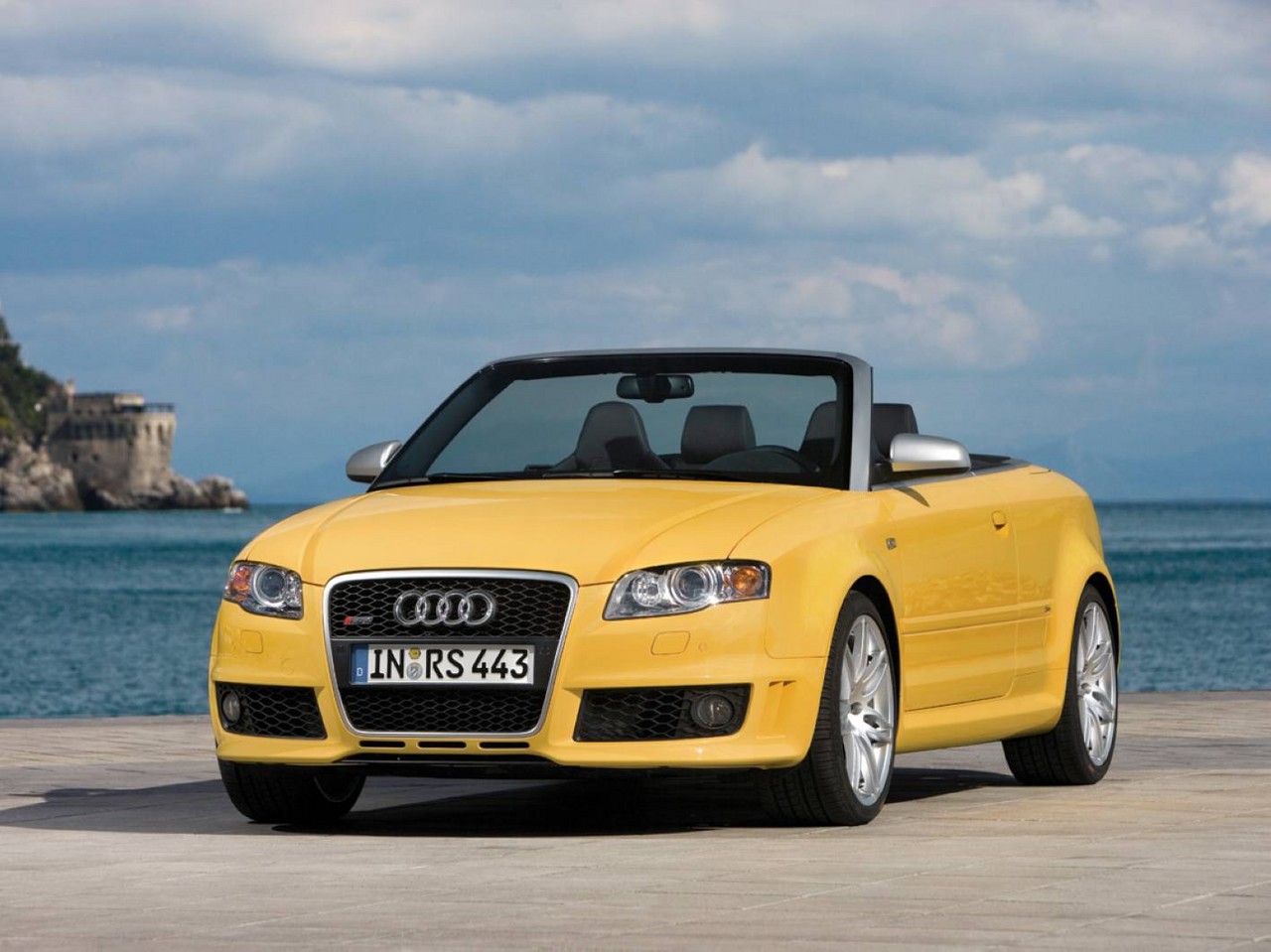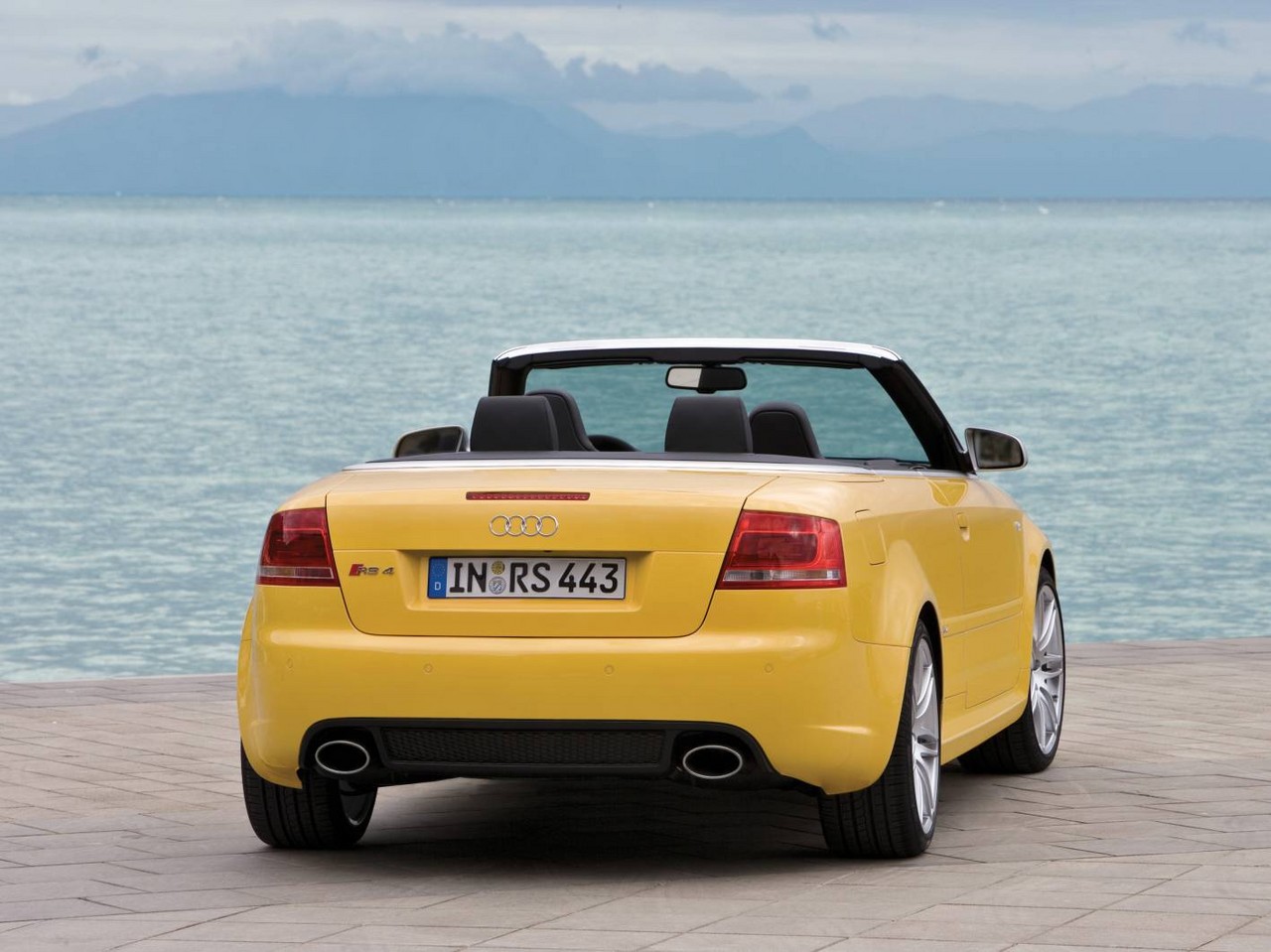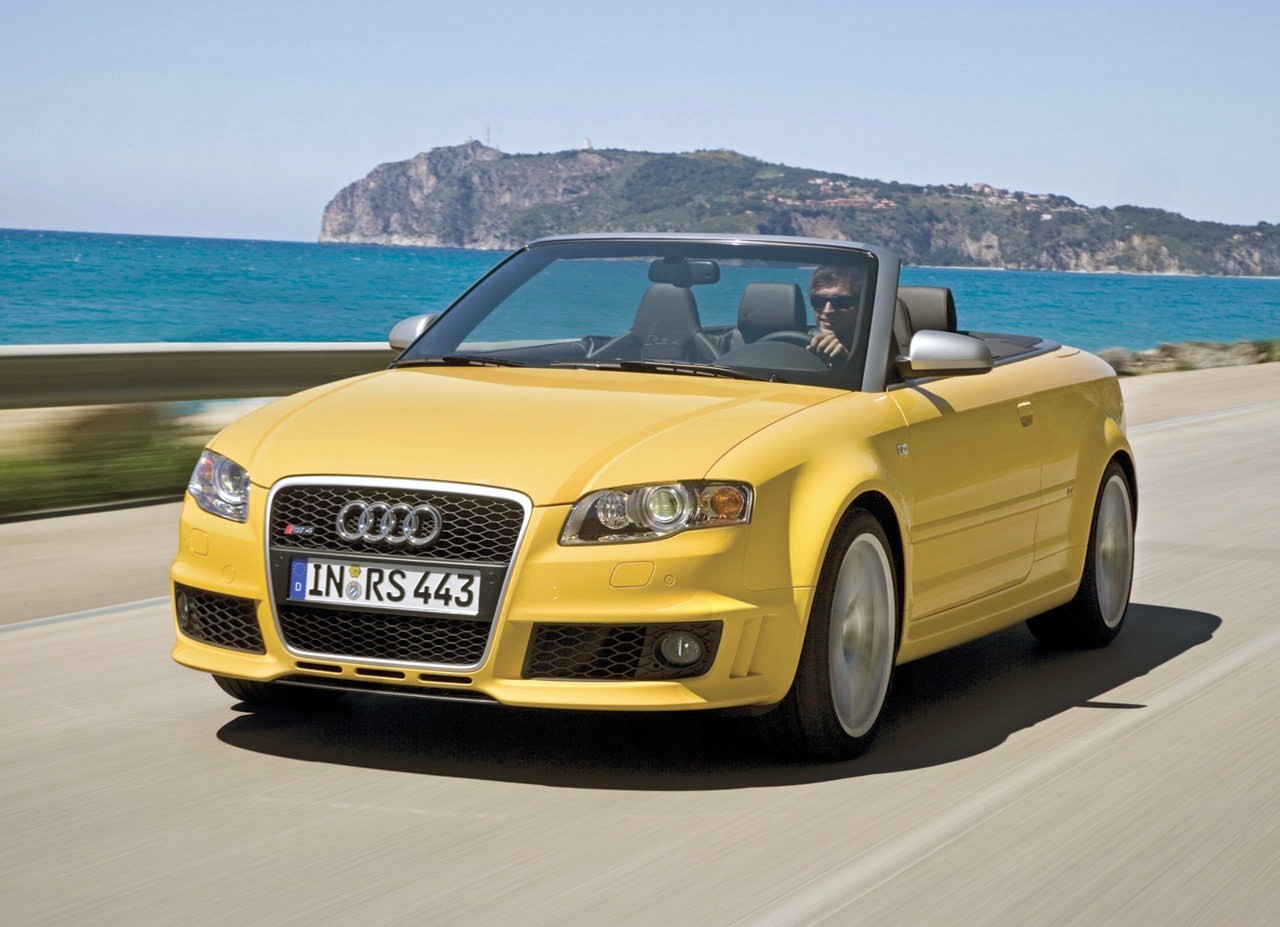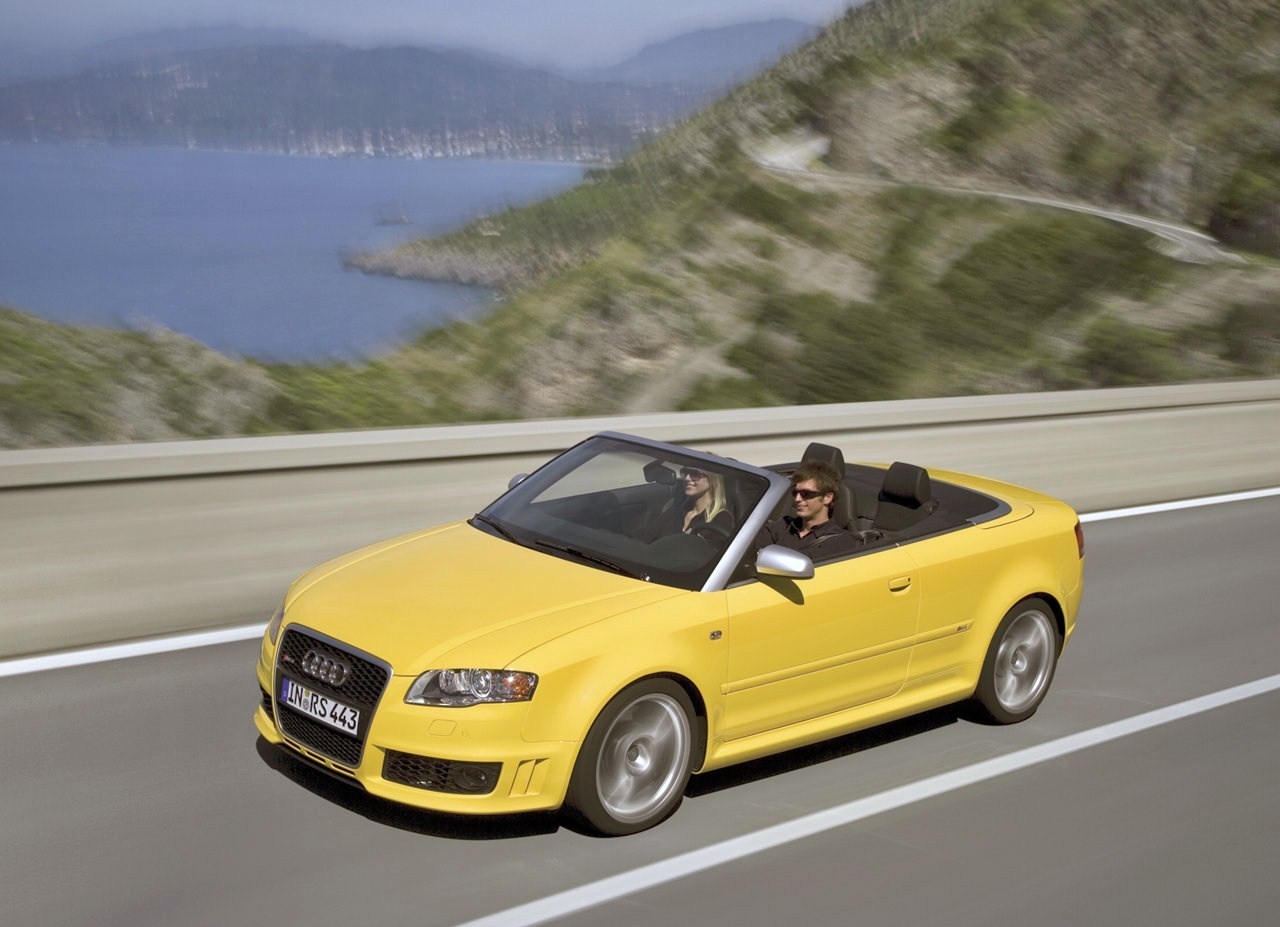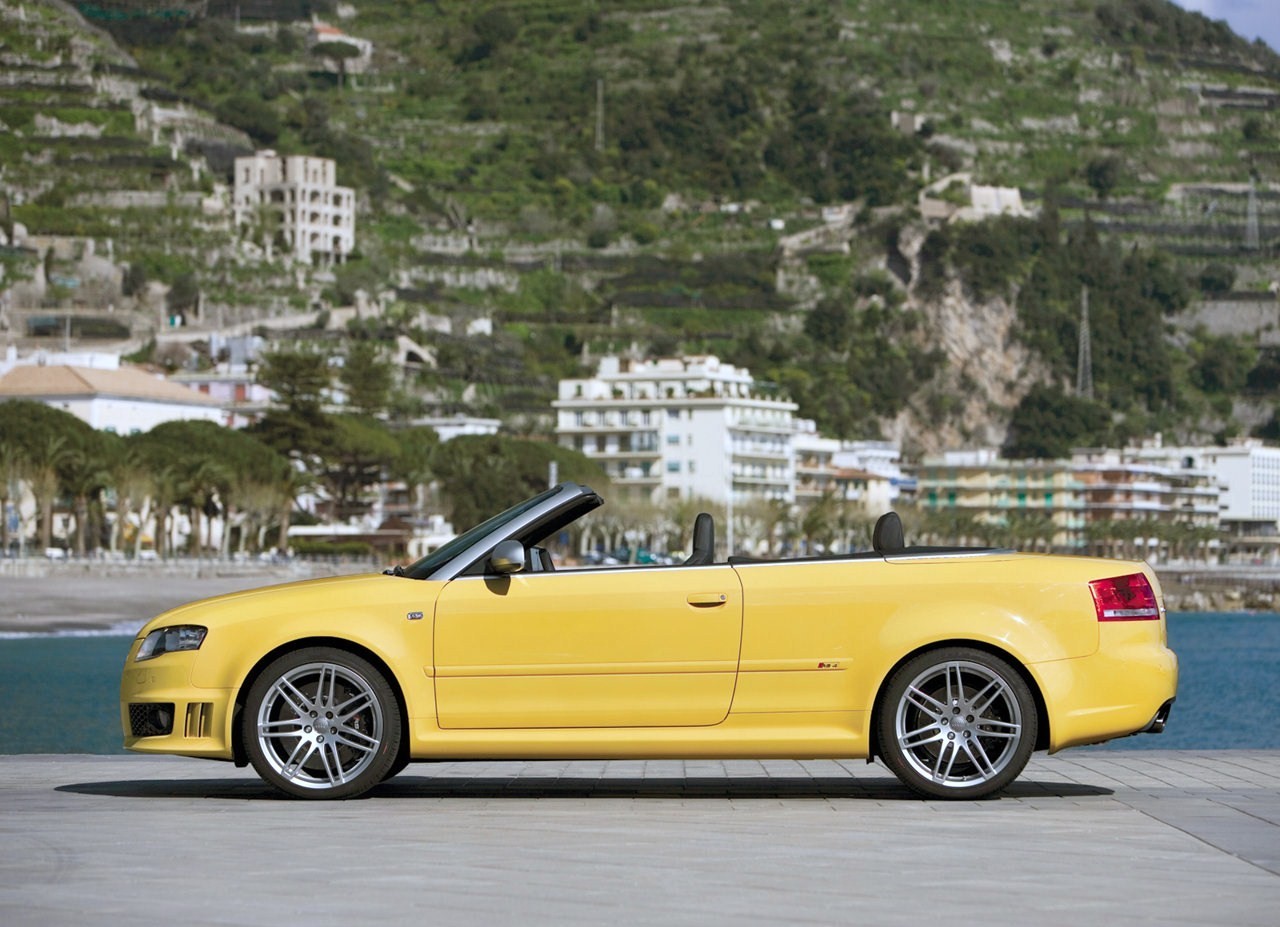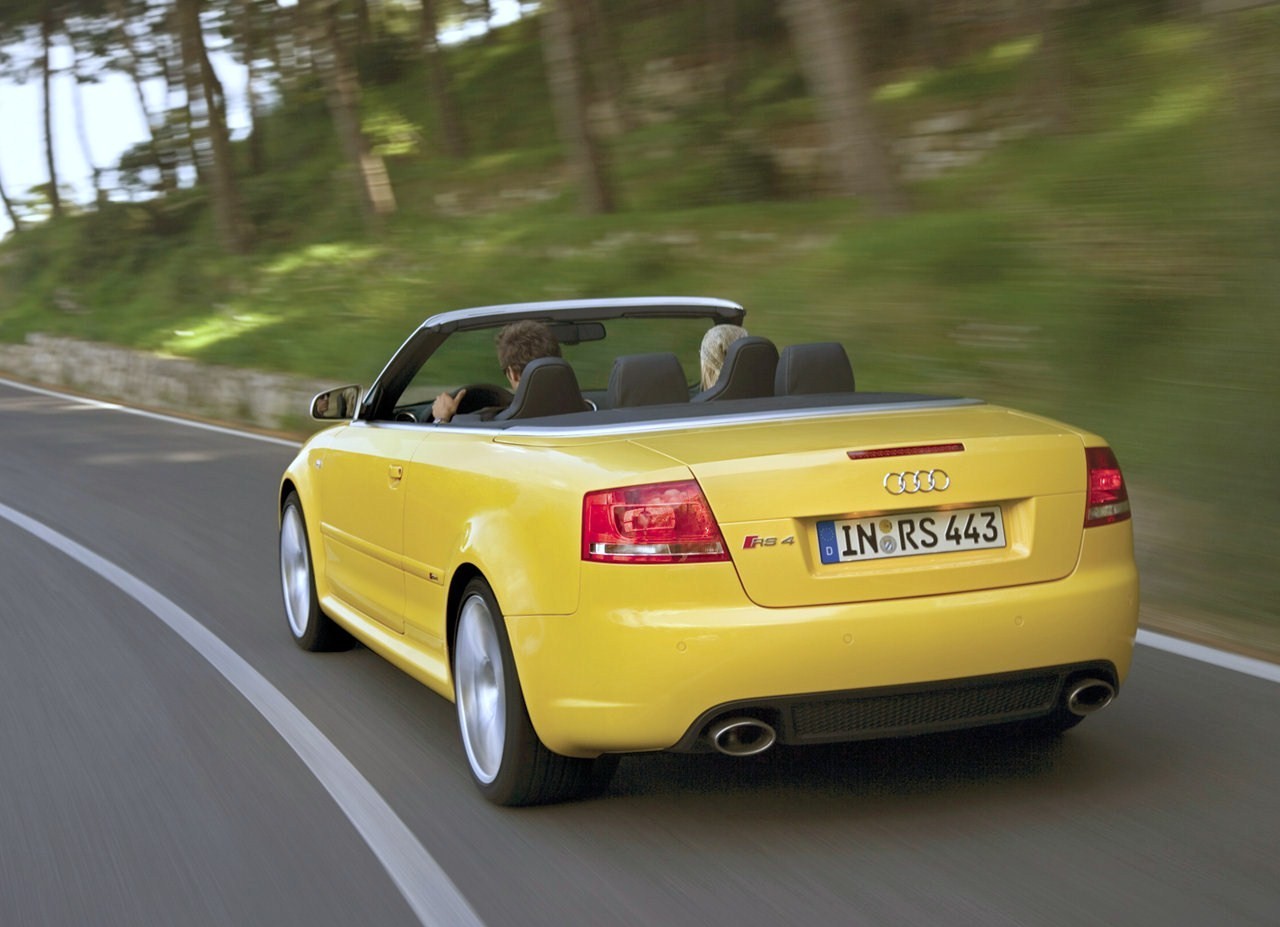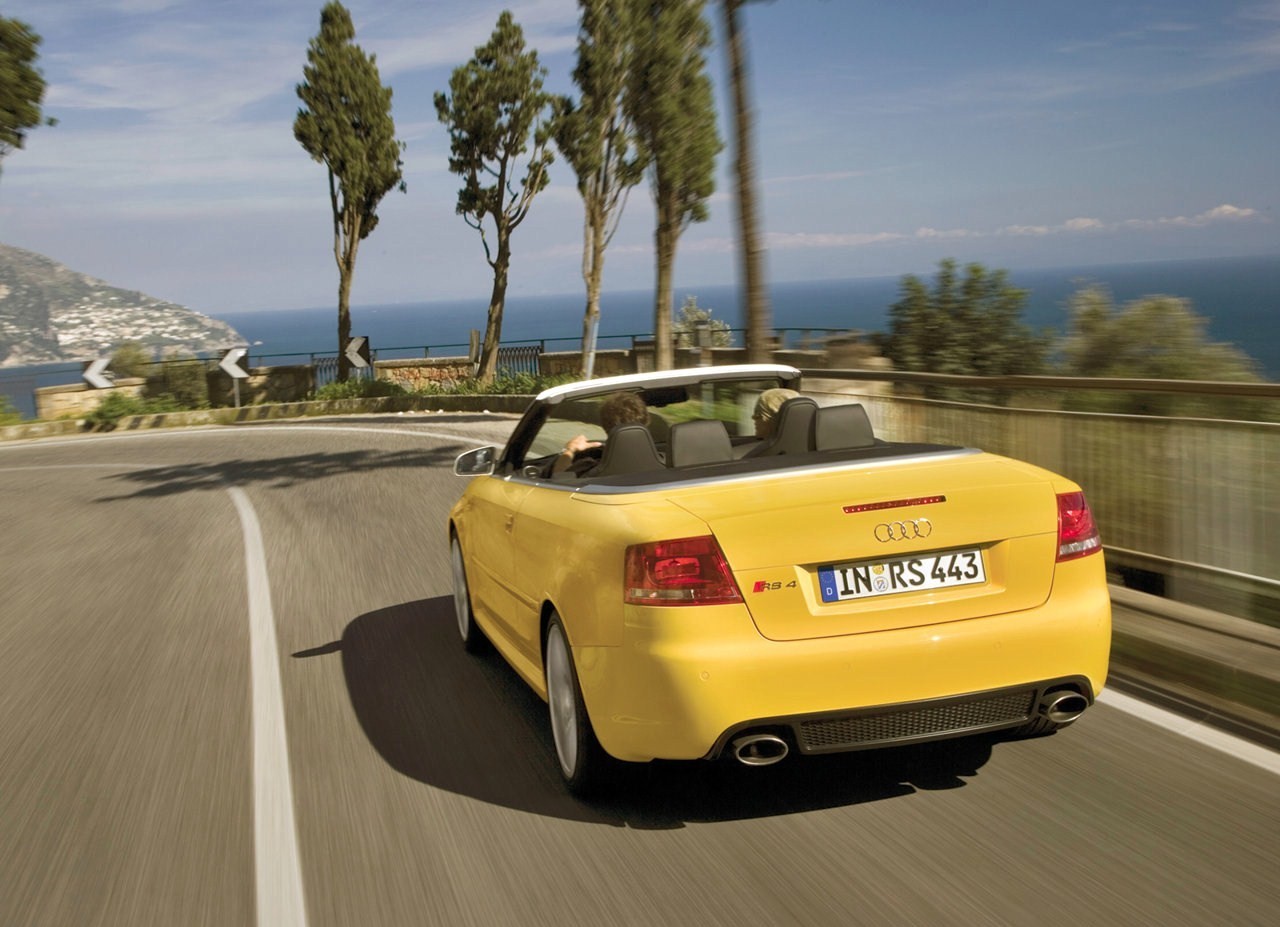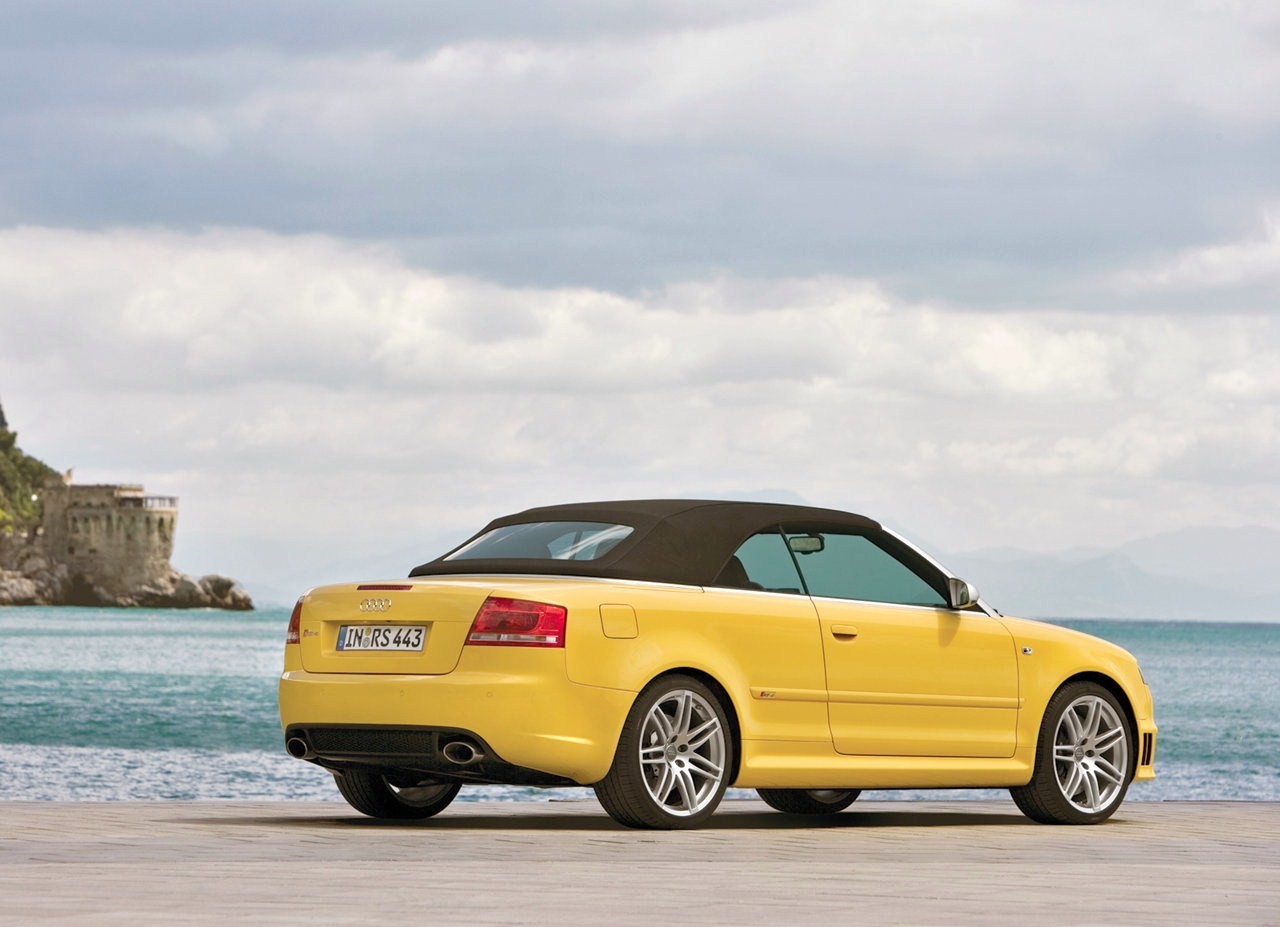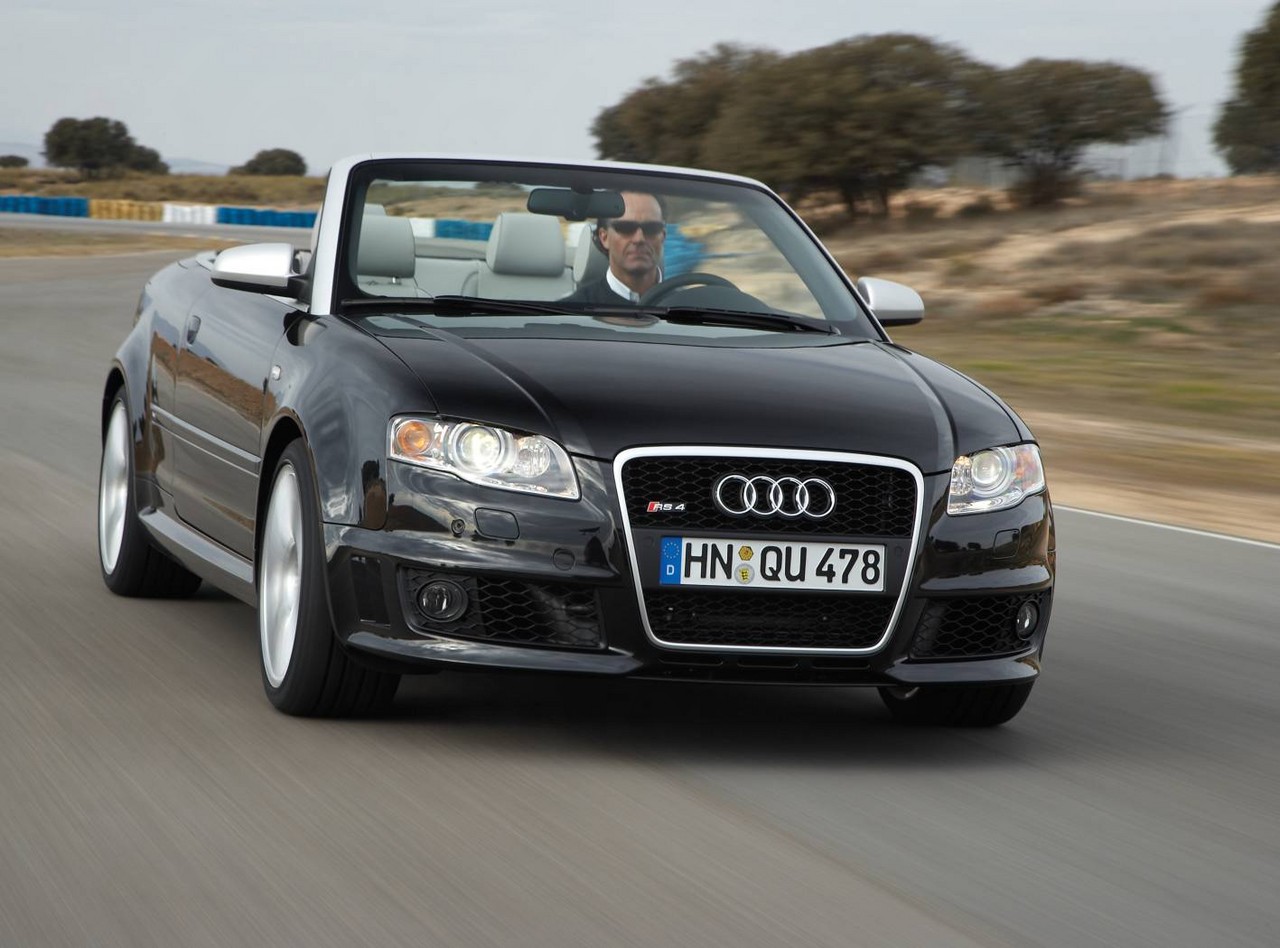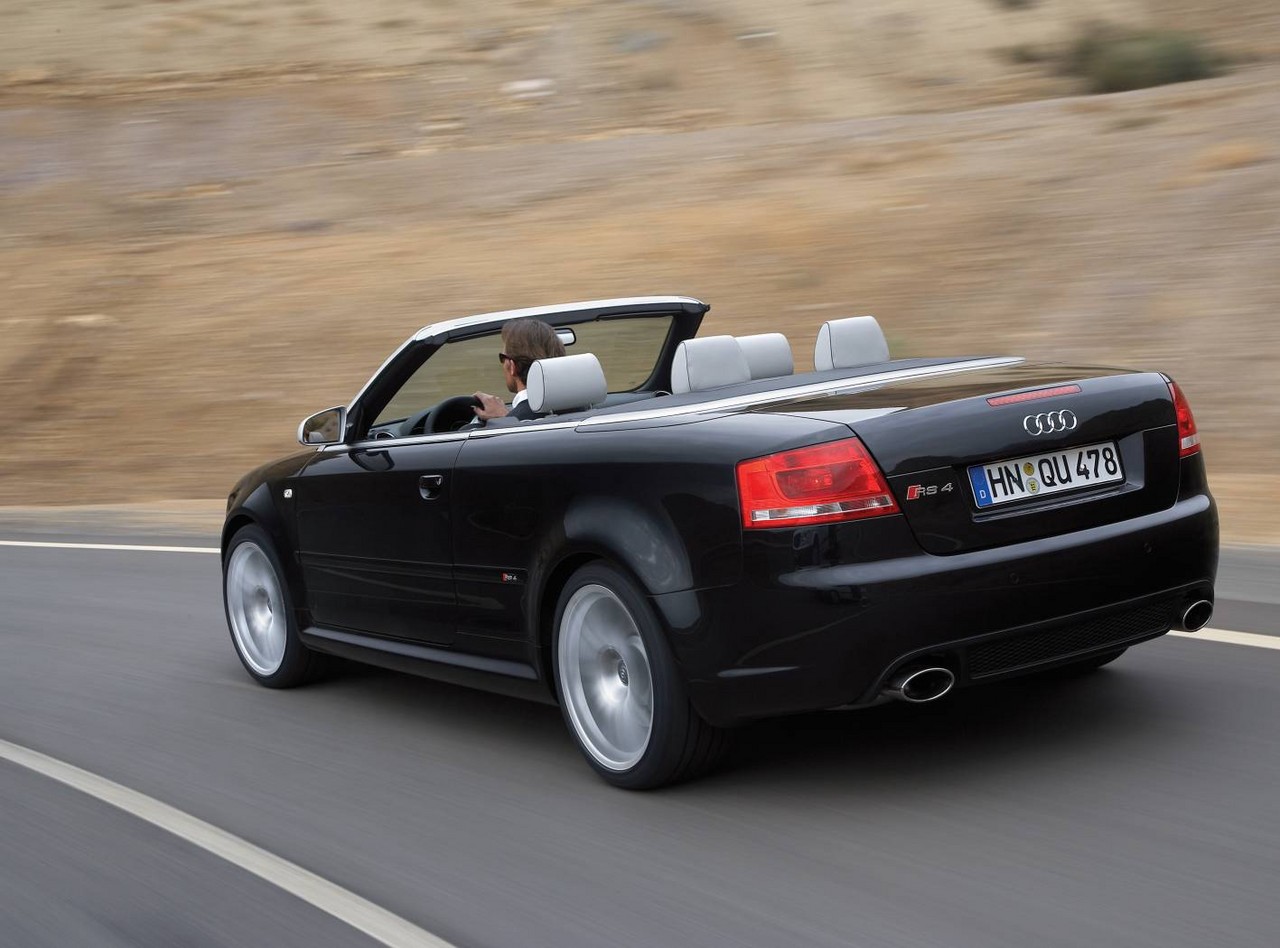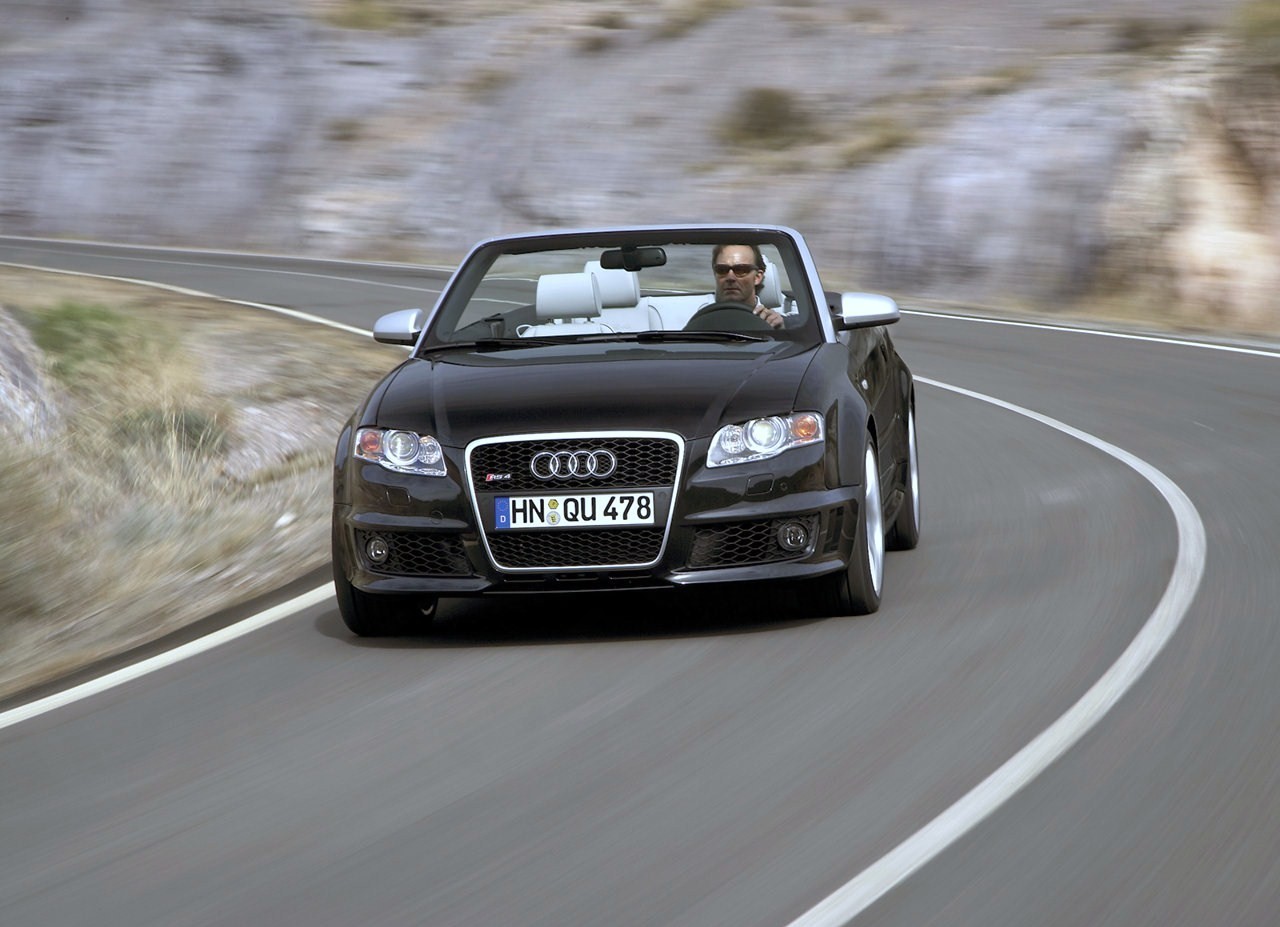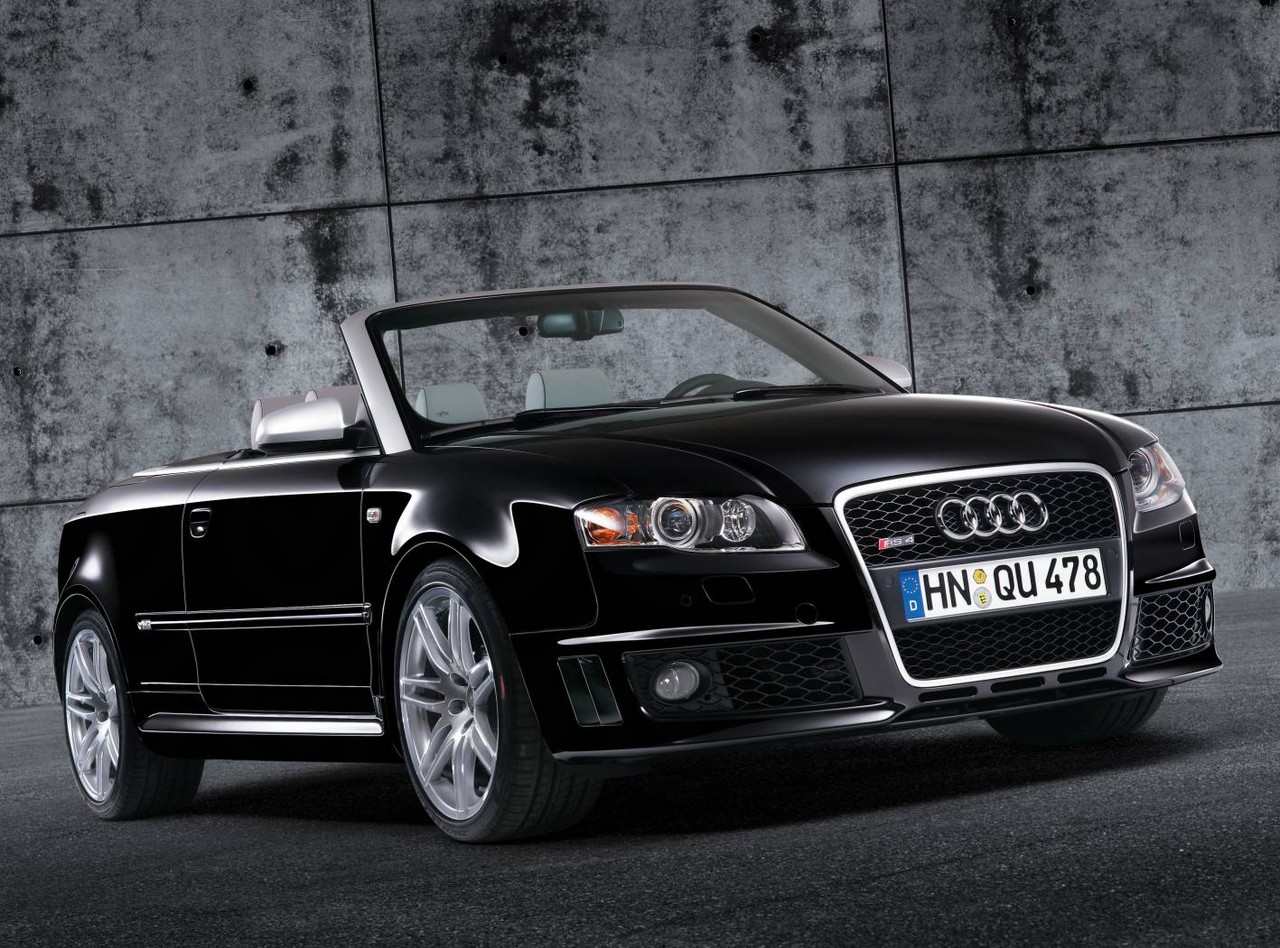
- Free-revving V8 engine
- quattro system provides immense traction and stability
- Impressive ride/handling balance
- High standard of interior fit and finish
- FSI engine susceptible to carbon deposits on intake valves
- Body shakes over bumps
- Limited boot space with roof down
- High maintenance costs
Overview
Released in March 2007, the Audi B7 RS4 Cabriolet was a four-seat, soft-top convertible. Manufactured in Neckarsulm, Germany, the Audi RS4 Cabriolet was powered by a 4.2-litre V8 petrol engine that was mated to a six-speed manual transmission and drove all four wheels via Audi’s quattro system.
4.2 FSI V8 engine
The B7 RS4 Cabriolet was powered by Audi’s BNS engine which had a two-piece, closed-deck cylinder block, die-forged crankshaft, split connecting rods, forged aluminium pistons, chain-driven double overhead camshafts, four valves per cylinder actuated by roller rocker arms, variable intake and exhaust valve timing (over a range of 42 crank angle degrees), direct fuel injection (Audi’s ‘Fuel Stratified Injection’, or FSI) and a compression ratio of 12.5:1.
| Engine | Trans. | Drive | Peak power | Peak torque |
|---|---|---|---|---|
| 4.2-litre BNS petrol V8 | 6sp man. | quattro | 309 kW at 7800 rpm | 430 Nm at 5500 rpm |
Dimensions
Compared to the Audi B7 A4 Cabriolet , the RS4 Cabriolet was 1 mm longer (at 4575 mm), 40 mm wider (1814 mm), the same height (1391 mm) and had the same length wheelbase (2650 mm). To increase body stiffness, the RS4 Cabriolet also had laser beam welding of the major seams within the steel body shell. Furthermore, the RS4 Cabriolet’s electro-hydraulic roof could be opened in 21 seconds and at speeds of up to 30 km/h.
Suspension
The Audi RS4 Cabriolet had four-link front suspension and double wishbone rear suspension, but also featured with Audi’s Dynamic Ride Control (‘DRC’) suspension system which used a fluid hydraulic linkage between diagonally opposed front and rear suspension dampers to minimise body roll and pitch.
quattro
The Audi B7 RS4’s ‘quattro’ system utilised a third-generation Torsen T-3 centre differential which provided a default front to rear torque split of 40:60. If traction was lost, however, up to 80 per cent of the engine’s torque could be directed to the front or rear axle. Furthermore, the RS4 was also fitted with front and rear electronic differential locks which could brake individual wheels to transfer torque across the open differential to the opposing wheel.
Safety equipment
Standard safety equipment for the Audi RS4 Cabriolet included dual front airbags, front side airbags, ABS, electronic brake force distribution, brake assist, electronic stability control, traction control, automatically deploying rollover bars (positioned behind the rear seats) and front seatbelts with pretensioners and load limiters.
Brakes
The Audi RS4 Cabriolet had two-piece, cross-drilled, radially ventilated and floating cast iron brake discs secured to aluminium alloy disc hubs. Furthermore, the 365 mm by 34 mm front discs were fitted with Brembo eight-opposed-piston calipers and 324 mm by 22 mm rear discs with Lucas-Girling TRW single-piston floating calipers.
Features
Standard features for the Audi RS4 Cabriolet included 19-inch alloy wheels, a ten speaker stereo with six-stack CD player and MP3-compatibility, dual zone climate control air conditioning, a DVD-based satellite navigation system with TV tuner, Silk Nappa leather upholstery, power adjustable front seats with driver’s seat memory settings, heated front seats, cruise control, directional bi-xenon headlights with washers, front and rear fog lamps, front and rear parking sensors, automatic headlights, rain-sensing wipers, a leather-wrapped steering wheel, remote central locking, power windows and heated mirrors, tilt and telescopic steering wheel adjustment, height adjustable front seats, courtesy lamps, wind deflector, trip computer, tyre pressure monitoring, an alarm and immobiliser.
Related links
